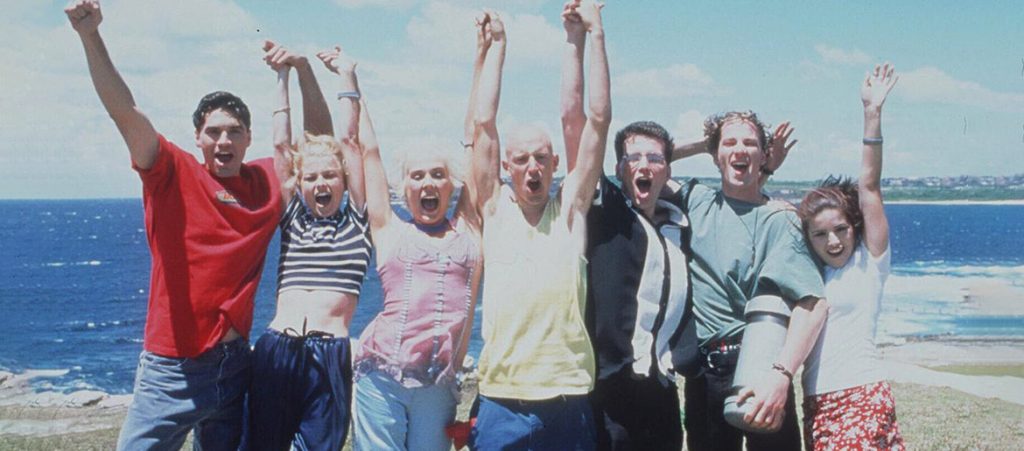
We need third places… and we’re losing them. Sociologist Ray Oldenburg coined the term “third place” in the 80s – somewhere that is not home or work, but a physical place that encourages “warmth, conviviality, and that special kind of human sustenance we call community.” In Australia, it’s often beautiful natural spaces that serve this purpose: parks for picnics and impromptu cricket matches; beaches for lazing with your mates all day; hikes and bushwalks; lakes and waterfalls, all accessible for free or cheap. So what happens now that these important cornerstones of community spirit and mental wellbeing are under serious threat from climate change?
Most of the online discourse about the decline in third-spaces has focused on the impact of rampant capitalism and weird politicisation (especially in the U.S.). The climate crisis takes a backseat in these discussions, but it is undeniably making it more difficult to access and enjoy natural third spaces. Australia is the driest inhabited continent and is welcoming a terrifying mix of droughts and flooding rains as its norm climate. Floods and fallen trees for Christmas seem to be only a preview of what’s to come. Seeking shelter from the sun that is getting harsher every year, forcing us to fork out as much as $189 to join the sea of cabanas on the sand. At the rate things are going, our community hubs may soon be too uncomfortable to bear, remain closed for extended periods or destroyed altogether.
The countries committed to the Paris Agreement (including Australia) are working together to keep global warming “well below 2°C”, with a hopeful stretch target of less than 1.5°C that is currently out of reach. Research predicts that the current plans “are expected to far exceed these goals, reaching 2.9°C by 2100.” Under a 3°C warmer future, global sea levels are projected to rise by up to 80 centimeters, while the seawater itself will become dangerously acidic and heat waves will last up to 16 days. It’s a less than ideal environment for beach days with friends or meet-ups in the park.
@interstellar_isabellar Replying to @raf12861 Part 1 of 3! Do these characteristics describe a third place you go to?❤️ and what are we looking to DO at these places? (Beyond just having fun and hangin out…which is necessary, but we’re getting at something more… #thirdspace #thirdspaces #thirdplaces #thirdplace #communitycenter #walkablecities #walkablecommunity #publicspace #greenscreen ♬ Jazz Bossa Nova – TOKYO Lonesome Blue
Why does losing a third place actually matter?
Even prior to the pandemic loneliness has been an issue for Australians. Data from the Household Income and Labour Dynamics in Australia (HILDA) Survey shows that from 2001 to 2021, about 1 in 5 Australians agreed with the statement “I often feel very lonely.” Podcaster Jordan Harbinger says third places can help reduce those feelings of loneliness: “A third place is a powerful antidote to isolation and exclusion. It restores connection, gives us an identity, supports us, and allows us to be our genuine self.” Community and a sense of belonging are the two most important factors in getting us out of the loneliness epidemic.
Climate change doesn’t only shape our physical environment; it is so intricately involved in our emotional, cultural, and societal wellbeing. The Black-Dog Institute states that “between 20 and 50% of people who live through unpredictable and extreme weather events can develop immediate elevated rates of anxiety, depression, PTSD, sleep disruption and suicidal ideation.” The destruction of community spaces only adds to those stresses.
While some people say social media is the modern-day third place, connecting people regardless of physical proximity or extreme weather events. It is certainly a space we can visit that isn’t work (for most), to talk our ideas and random opinions out with others. But rather than grounding us in a shared spaces with others, the curated nature of social media often leads to a distorted perception of reality, creating unrealistic comparisons and a sense of inadequacy. Plus, the lack of physical presence and genuine human interaction can actually make the isolation and loneliness feel worse. There will always be limitations for creating authentic relationships solely online; researchers have even found that “using the Internet for interpersonal communication had a negative impact on people’s quality of life whereas talking to a friend or family member face-to-face for just 10 minutes had a positive impact on quality of life.”
The protection of third spaces is yet another reason on the already very long list of reasons to push hard for more aggressive action on climate change. It’s not just about preserving the environment for our physical survival – it’s about safeguarding the emotional, cultural, and societal foundation upon which our communities thrive.
Smart people read more:
One thing European cities do far better than Australia (except Melbourne) – Sydney Morning Herald
Why outer suburbs lack inner city’s ‘third places’: a partial defence of the hipster – The Conversation
Have podcasts benefited from the decline of third places? – Fast Company

Comments are closed.